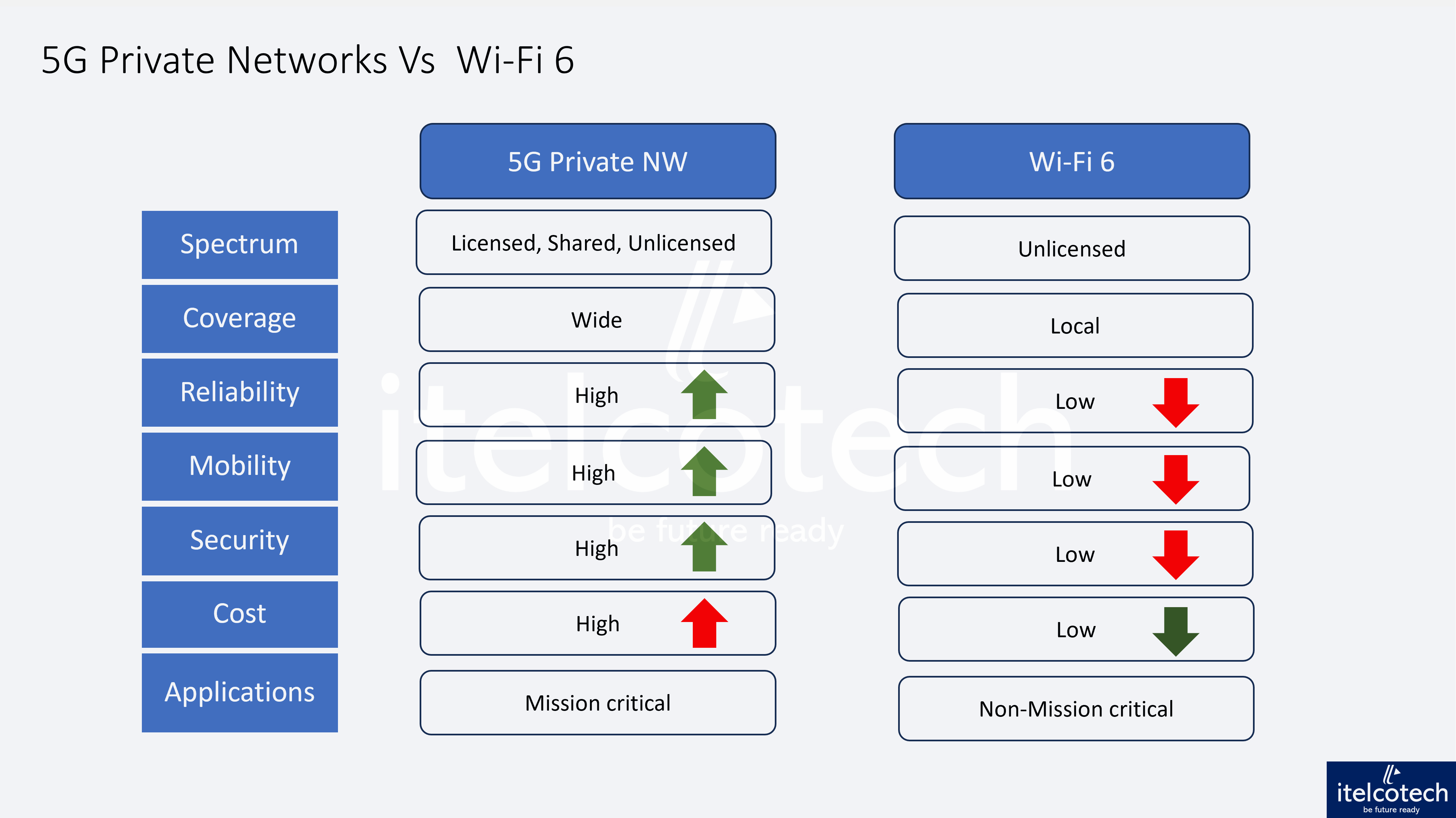
Private 5G Vs Wi-Fi
byRahul Kaundalon
Private 5G and Wi-Fi are both wireless communication technologies, but they have distinct characteristics and use cases. Here's a comparison between private 5G and Wi-Fi in various aspects:
1. Technology and Standards:
Private 5G: Private 5G refers to the deployment of a 5G network within a specific organization or location. It follows the 3GPP standards, which are the same standards used for public 5G networks.
Wi-Fi: Wi-Fi, or IEEE 802.11, is a set of wireless networking standards defined by the Institute of Electrical and Electronics Engineers (IEEE).
2. Coverage and Range:
Private 5G: Generally provides better coverage and range compared to Wi-Fi. In licensed spectrum bands, it offer more consistent and reliable connectivity over larger areas.
Wi-Fi: Typically has a shorter range and is more suitable for localized connectivity within buildings or specific areas.
3. Bandwidth and Data Rates:
Private 5G: Offers higher potential data rates compared to Wi-Fi, especially in the millimeter-wave spectrum. It can support extremely high-speed and low-latency applications.
Wi-Fi: While Wi-Fi 6 and Wi-Fi 6E standards provide high data rates, they may not match the peak speeds offered by private 5G in certain scenarios.
4. Spectrum :
Private 5G: Uses licensed, shared and unlicensed spectrum. Licensed/Shared spectrum provides dedicated frequencies and helps to reduce interference and enhance security.
Wi-Fi: Operates in unlicensed spectrum, which is shared with other devices and networks. This may lead to more interference, especially in crowded environments.
5. Security:
Private 5G: Generally considered more secure due to its use of licensed/shared spectrum, encryption, and authentication mechanisms. Private networks have more control over security configurations.
Wi-Fi: Security relies on protocols like WPA3, but vulnerabilities can still exist. Wi-Fi networks are susceptible to various types of attacks, and security measures depend on the configuration of the network
6. Deployment Costs:
Private 5G: Typically involves higher initial deployment costs, including licensing fees for spectrum and infrastructure setup. However, it may offer better long-term cost efficiency for large-scale deployments.
Wi-Fi: Generally has lower upfront costs and is widely adopted, making it a cost-effective choice for smaller-scale deployments.
7. Mobility:
Private 5G: Ideal for high speed mobile customers
Wi-Fi: Commonly used for local area networks
In summary, the choice between private 5G and Wi-Fi depends on the specific requirements of the use case, including factors like coverage, data rates, security, and deployment costs. Both technologies have their strengths and weaknesses, and organizations may choose to deploy them based on their needs and budget.
**To learn about Private 5G in detail, please refer to course - https://www.itelcotech.com/learningpath/private-5g
